In today’s increasingly digital world, the ways a business approaches its cloud computing strategy is paramount. Cloud adoption was already expanding for several years and has been accelerated by the pandemic. But as a post-pandemic world begins to take shape, new trends in cloud usage are beginning to take shape.
The eleventh annual Flexera 2022 State of the Cloud Report (previously known as the RightScale State of the Cloud Report) highlights the latest cloud computing trends, including strategies, challenges and initiatives from a broad cross-section of industries and organizations. The report explores the thinking of 753 respondents from a survey conducted in late 2021 and highlights the year-over-year (YoY) changes to help identify trends. The respondents—global cloud decision makers and users—revealed their experiences with cloud migration, cloud computing, and their insights about the public, private and multi-cloud market.
Select highlights of the report are included below. For complete survey results, download the Flexera 2022 State of the Cloud Report.
Terminology used:
- Large enterprises are public- or private-sector organizations with 10,000 or more employees
- Enterprises are public- or private-sector organizations with 1,000 or more employees
- SMBs are small to midsized businesses with fewer than 1,000 employees
- Organizations refers to the combination of enterprises and SMBs participating in the survey
Organizations embrace multi-cloud
A multi-cloud approach is still the de facto standard among organizations. Eighty-nine percent of respondents reported having a multi-cloud strategy, and 80 percent are taking a hybrid approach by combining the use of both public and private clouds.
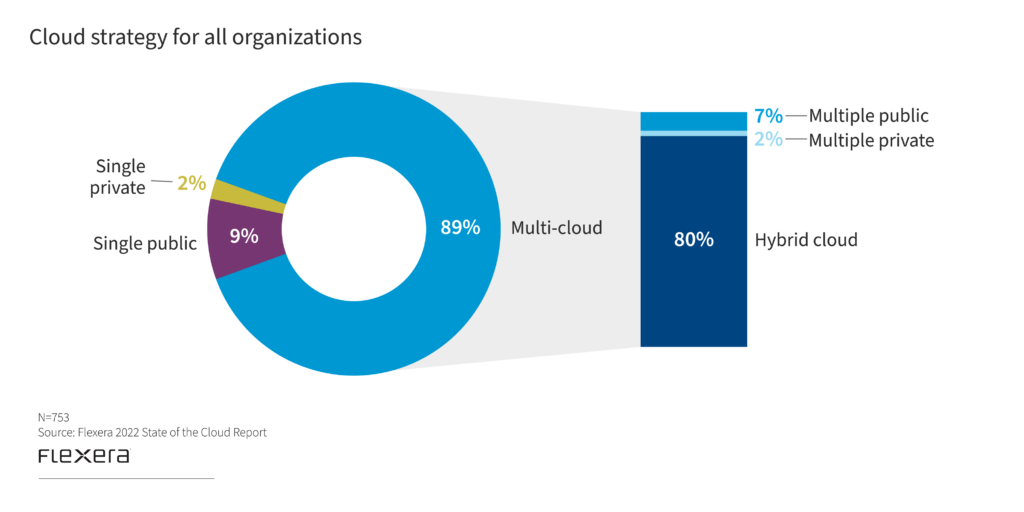
Public cloud continues to accelerate
The increasing use of public cloud is driving up cloud spend for organizations of all sizes, and public cloud spend is now a significant line item in IT budgets. Thirty-seven percent of enterprises said their annual spend exceeded $12 million and 80 percent reported that cloud spend exceeds $1.2 million per year. SMBs run fewer and smaller workloads, so it stands to reason their cloud bills would also be lower. However, 53 percent of SMBs spend more than $1.2 million—up from 38 percent last year.
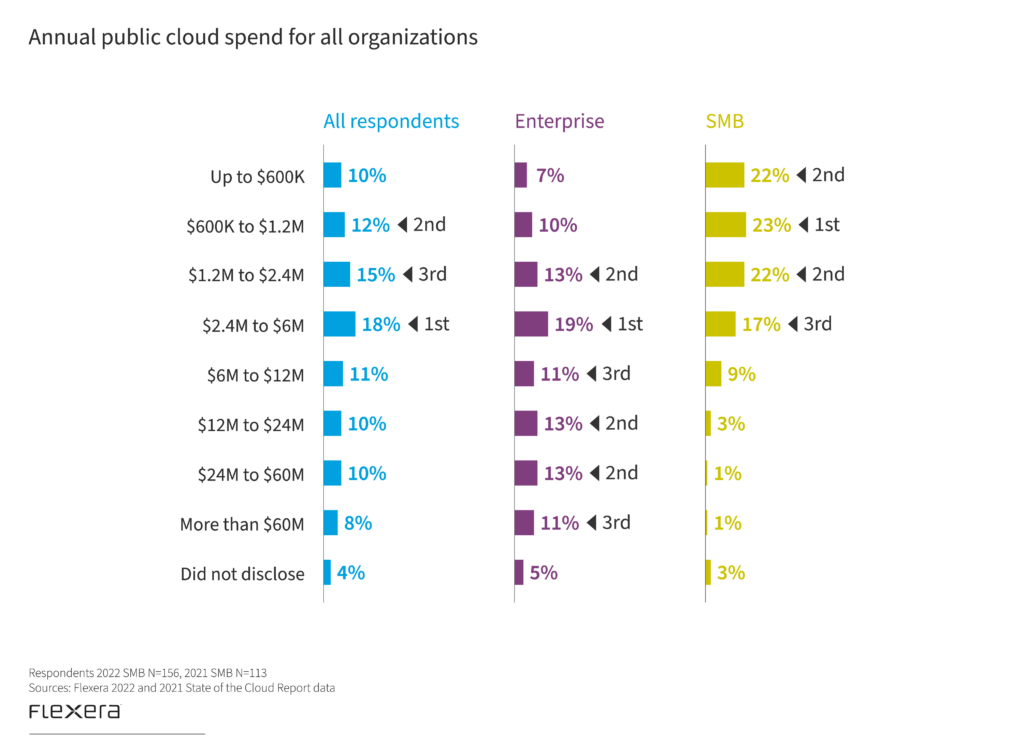
Organizations struggle to control growing cloud spend
As organizations continue to spend more on public cloud, it’s easy to understand why FinOps is evolving and being adopted as a financial management discipline. Respondents indicated their public cloud spend was over budget by an average of 13 percent, and expect their cloud spend to increase by 29 percent in the next twelve months. This trend indicates it’s more critical than ever to get a handle on forecasting and cost optimization.
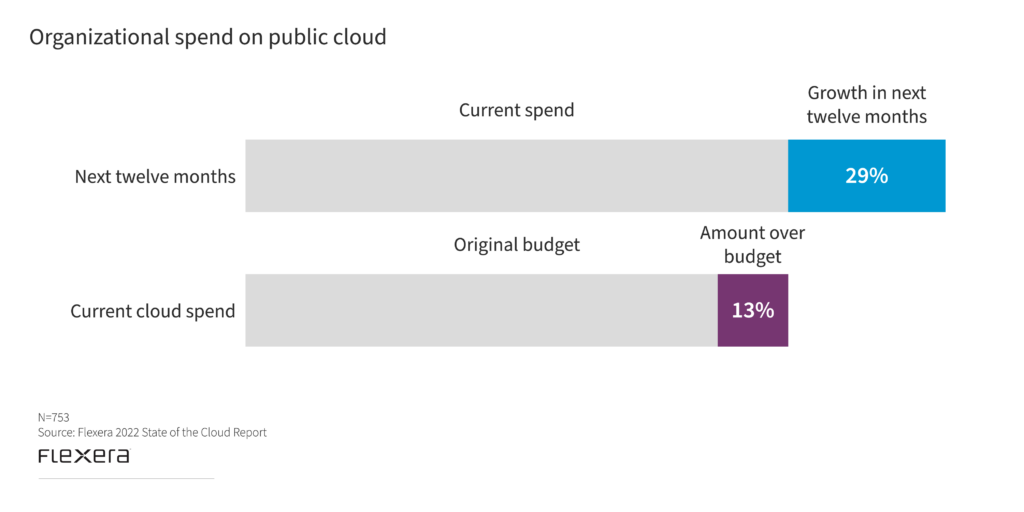
Significant cloud spend is wasted
Wasted cloud spend is a major issue and becomes more critical as cloud costs continue to rise—and many organizations tend to underestimate their amount of waste. Respondents self-estimated that their organizations waste 32 percent of cloud spend, which is up from 30 percent last year.

Get the latest insights in cloud computing trends and cloud migration statistics by downloading the Flexera 2022 State of the Cloud Report.
Optimizing usage is the top cloud initiative for the sixth year running
Once again, optimizing the existing use of the cloud (cost savings) is the top initiative reported among organizations, followed by migrating more workloads to the cloud. Optimizing usage is a cost-control measure and migrating workloads can save money while driving agility. As organizations move more workloads to the cloud, they can retire the technical debt associated with maintaining and operating traditional data centers. Moving to SaaS solutions eliminates the resources required to manage equivalent on-premises software packages.
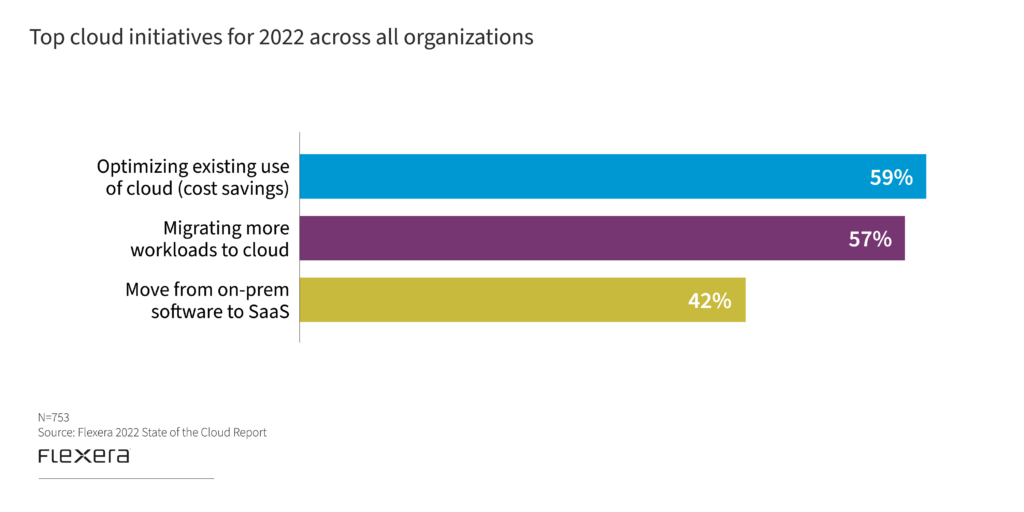
Major public cloud provider usage is shifting among enterprises
Azure has surpassed AWS for breadth of adoption for the first time. Google Cloud Platform, Oracle Cloud Infrastructure and IBM Cloud round out the top five. Azure (80 percent running workloads) was the only provider to increase their adoption rate YoY. Google Cloud Platform showed the highest percentage of experimentation (23 percent), which tends to drive more adoption in the future.
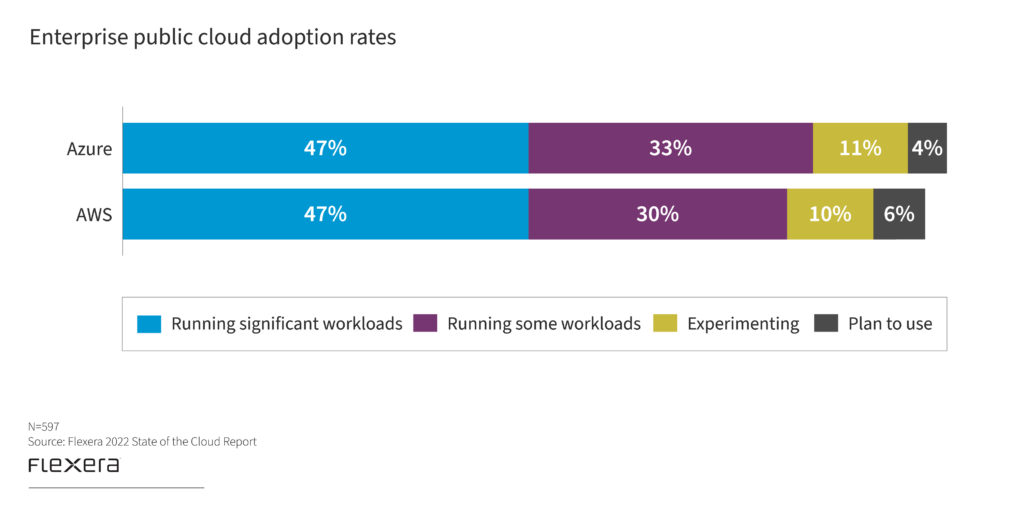
Enterprises are growing their public cloud footprint
Cloud-first policies and cloud migration are top of mind for senior IT leaders, particularly in enterprise environments. As a result, enterprises are rapidly increasing public cloud spend and workload volumes.
Cloud spend is a good indicator of how much an enterprise is using a public cloud provider. Fifty-two percent spend $1.2 million or more annually on AWS. By comparison, 52 percent also spend $1.2 million or more on Azure, indicating Azure has closed the gap for the first time in the eleven years of this survey. Thirty-three percent reported spending $1.2 million or more on Google Cloud Platform.
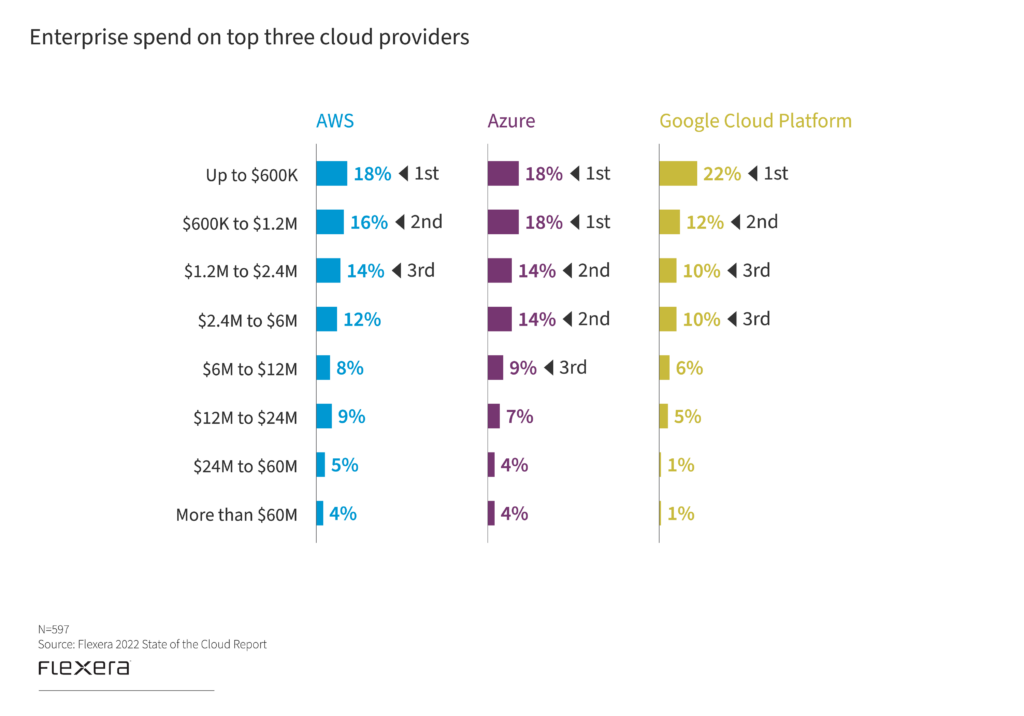
The most heavily used PaaS services have also shifted
The number of public cloud users who utilize service beyond basic compute, storage and network services continues to grow. Organizations are increasingly utilizing PaaS services from cloud providers. Survey respondents ranked data warehouse, relational database as a service (DBaaS) and container-as-a-service (CaaS) in the top three. This shift is driven by the growing interest in leveraging containers to speed deployment, scale operations and increase the efficiency of workloads running in the cloud.
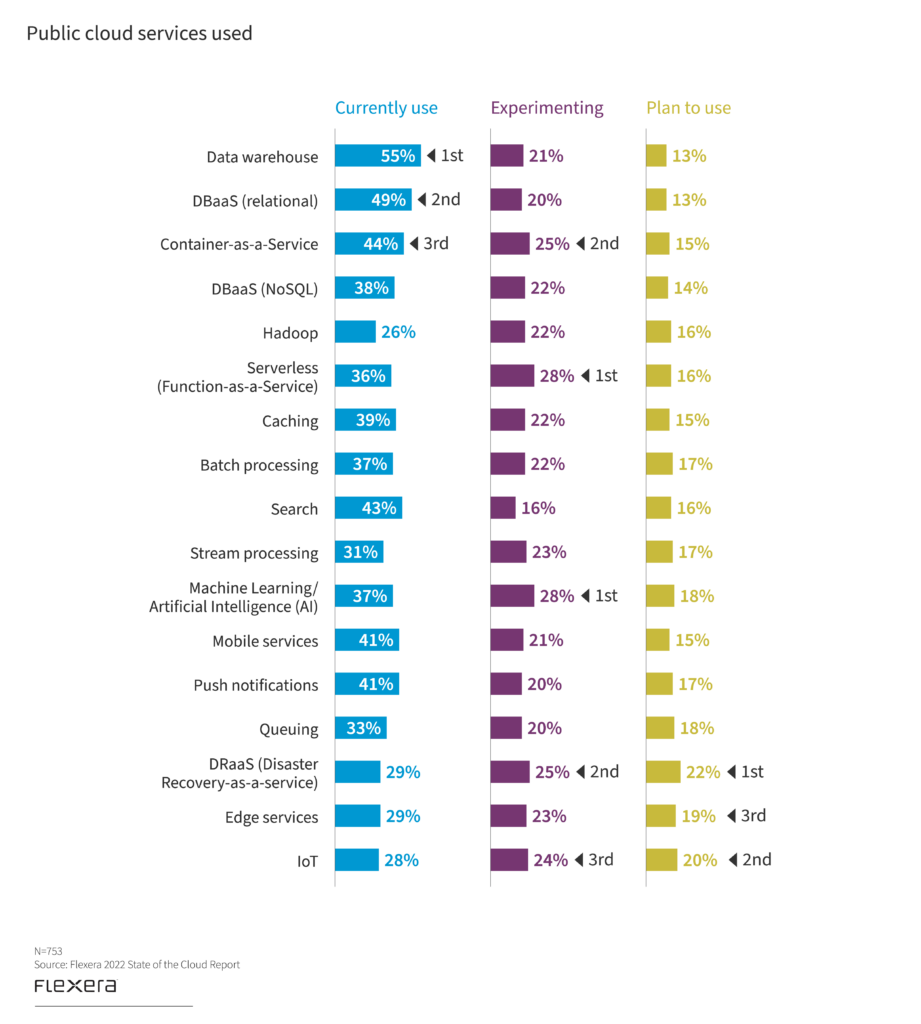
Don’t get left behind in the “new normal”
To compete in today’s game, organizations must have the cloud play a role in their strategy. Organizations are moving to the cloud because of its scalability, economy and reach—and they’re using a variety of metrics to measure its resulting business value. This has proven to be invaluable over the past two years to meet evolving needs presented by the COVID-19 pandemic’s impact on business.

Cloud Management
Take control of cloud use with out-of-the-box and customized policies to automate cost governance, operations, security and compliance.DISCOVER MORE
One thing is certain: to remain competitive and maximize the available advantages, organizations must make strategic decisions about cloud computing, cloud architecture, usage of public clouds, effective tooling, cloud migration and cost management. And the siloed and disjointed approach of yesterday will no longer be effective in today’s fast-evolving digital world.
Get the latest insights in cloud computing trends and cloud migration statistics. For the complete survey results, download the free Flexera 2022 State of the Cloud Report.
Source : https://www.flexera.com/blog/cloud/cloud-computing-trends-2022-state-of-the-cloud-report/








